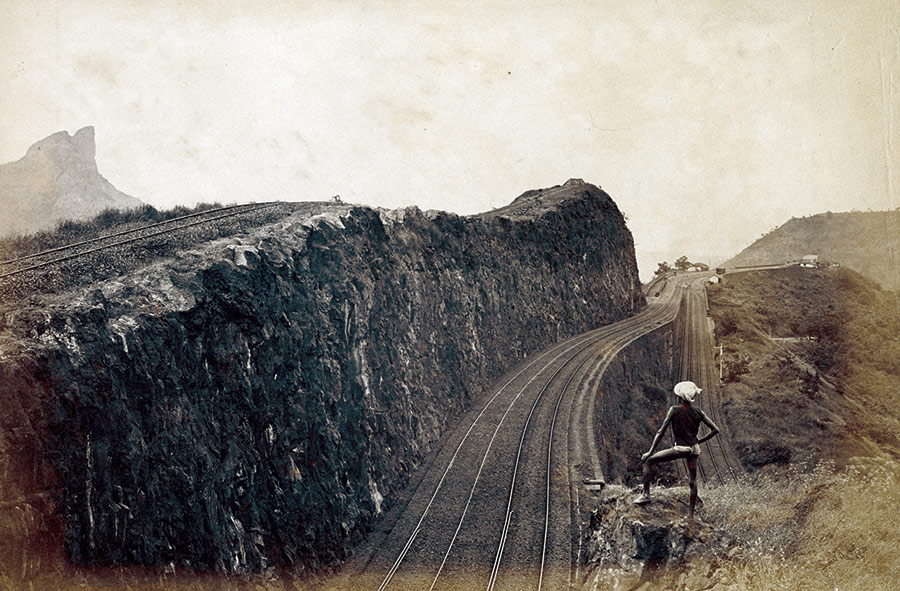Iron Demons to Break British Mettle
The creation of India’s fantastic rail network was the work of the British Raj, but it came at a high price for Indians themselves.
 Nobody who has visited India can fail to marvel at the country’s railways. Employing 1.3 million people, they are the world’s third largest employer after the Chinese People’s Liberation Army and Walmart. A ride on them is a quintessentially Indian experience, a window to the wonderful beauty and diversity of the country and its bewildering complexity.
Nobody who has visited India can fail to marvel at the country’s railways. Employing 1.3 million people, they are the world’s third largest employer after the Chinese People’s Liberation Army and Walmart. A ride on them is a quintessentially Indian experience, a window to the wonderful beauty and diversity of the country and its bewildering complexity.
Is it a legacy of the Raj, that Indians should cherish? Christian Wolmar suggests not. He argues that the British never intended the railways to benefit Indians. They were constructed to transport soldiers around the country to strengthen Britain’s hold on India and open up the country for British goods, helping the British economy and making profit for British investors.
Taxes that the British collected from Indians made the railways possible. These taxes paid the dividends to Victorian investors in Britain, many of whom were widows, barristers, clergymen, spinsters, bankers and retired army officers, who were guaranteed a five per cent return, when interest rates were three per cent in Britain. The cost to the Indian taxpayer was £50 million.
In what was the first public-private partnership, the Indian government supplied land for free, while in Britain, rail companies had to spend a fortune to acquire land. An estimated 25,000 Indians were killed during the eight-year project. If the figures are accurate, says Wolmar, it would be ‘the deadliest railways project ever undertaken anywhere in the world’.
Few directors of the British railway companies responsible for building the Indian railways ever visited India. At board meetings, discussion would be more likely to be about whether the wife of a British engine driver should accompany her husband for free on a boat trip to India, than the safety of Indian construction workers. Indians were not considered capable of driving trains, leading to drivers being brought from England. The railways strengthened the race divide between the Europeans, as the British called themselves in India, and Indians. Europeans had first-class carriages upholstered like Victorian drawing rooms with their own bathrooms and a small room for servants; even the second class was better than in the UK. Indians were crammed in the third class, with little leg-room, and no toilet facilities.
Pilgrims were made to travel in covered freight wagons. In 1873, when one Englishman highlighted the Indian passengers’ discomfort, the guard’s response was ‘pilgrims is worse then ’osses, Sir’. The railways did, however, transform India. Despite the dreadful travelling conditions, vast number of pilgrims used the ‘iron demon’, as Indians called them, to visit holy sites. The railways, far from weaning Hindus away from their religion, as the British had hoped, strengthened it. Indian nationalists, including Gandhi, while denouncing the railways, used them to fashion their fight against the British.
Wolmar’s great lament is that the British did not use the Indian railways to industrialise the country. India was not allowed to manufacture locomotives. Indeed, the first Indian-built steam locomotive was constructed in 1950, three years after independence. By contrast, Japan, which built its first railway in 1872, was manufacturing three quarters of its railway carriages by the turn of the century, which helped spur that country’s industrialisation. While this illustrates the limiting nature of foreign rule, since independence the Indians have made the most of this British invention, even if the British never meant it to be a gift for their conquered people. Wolmar has combined an eye for detail with a wonderful evocation of India.
Railways and the Raj: How the Age of Steam Transformed India
Christian Wolmar
Atlantic Press
384pp £25
Mihir Bose’s latest book is From Midnight to Glorious Morning? India Since Independence (Haus Publishing, 2017).




